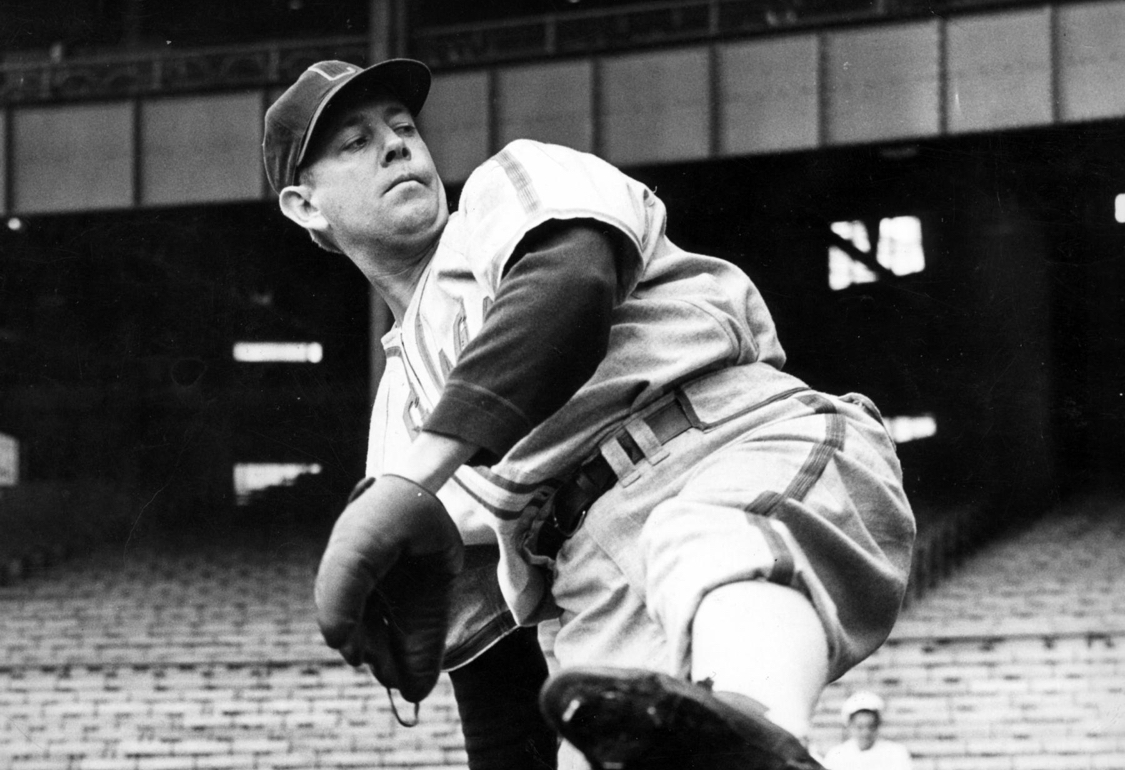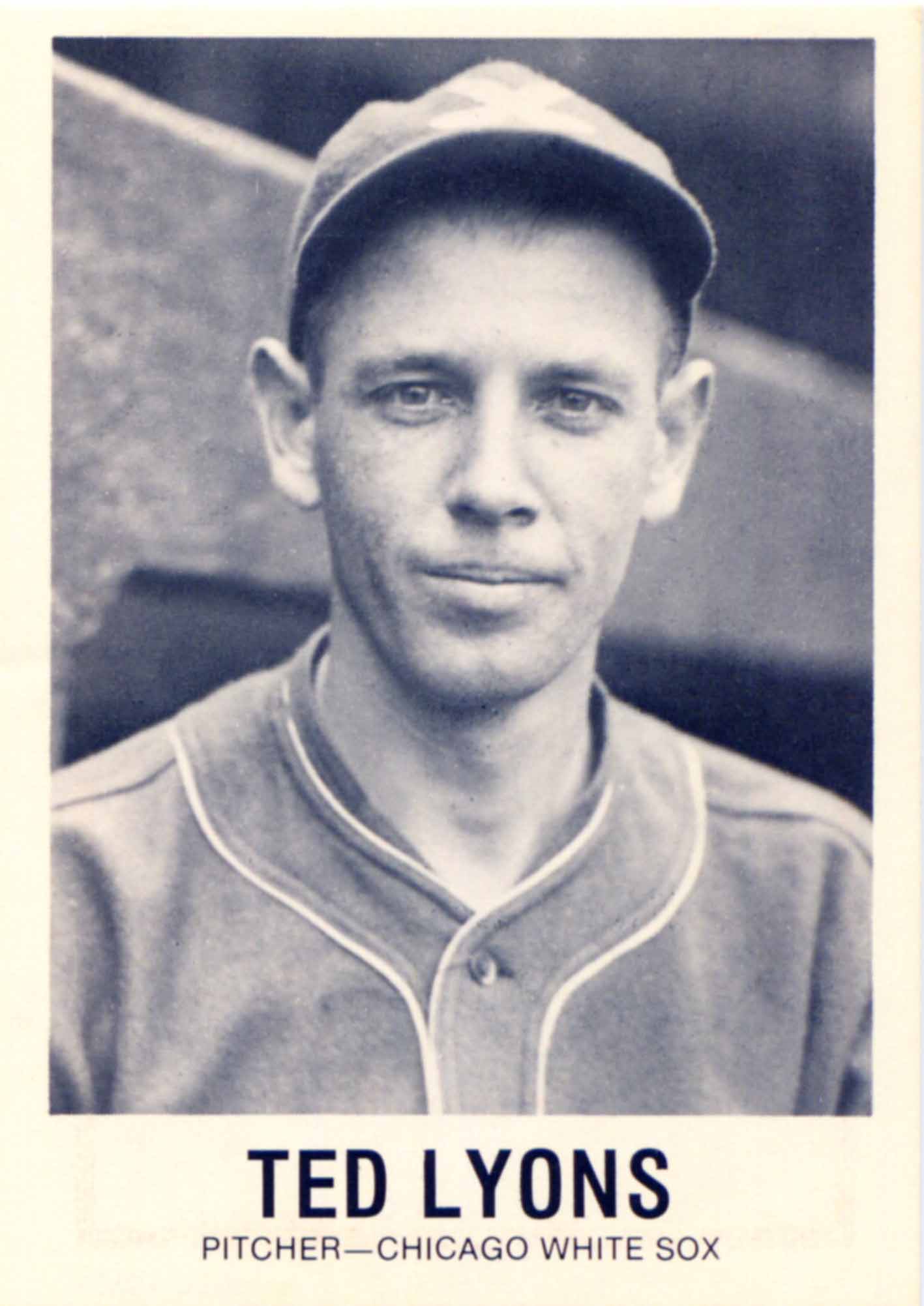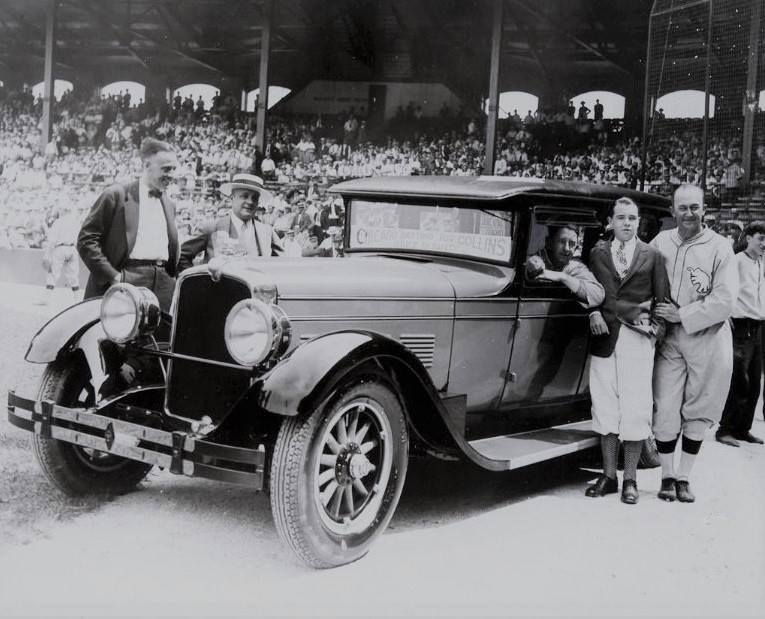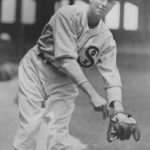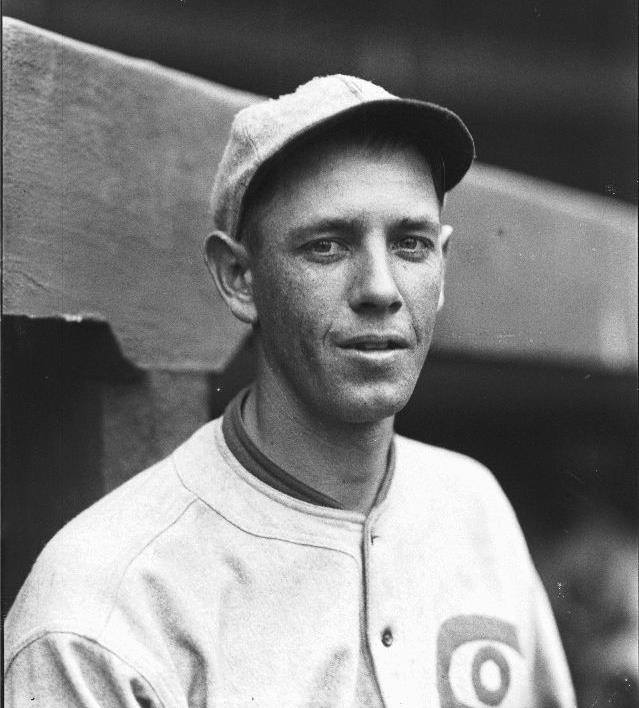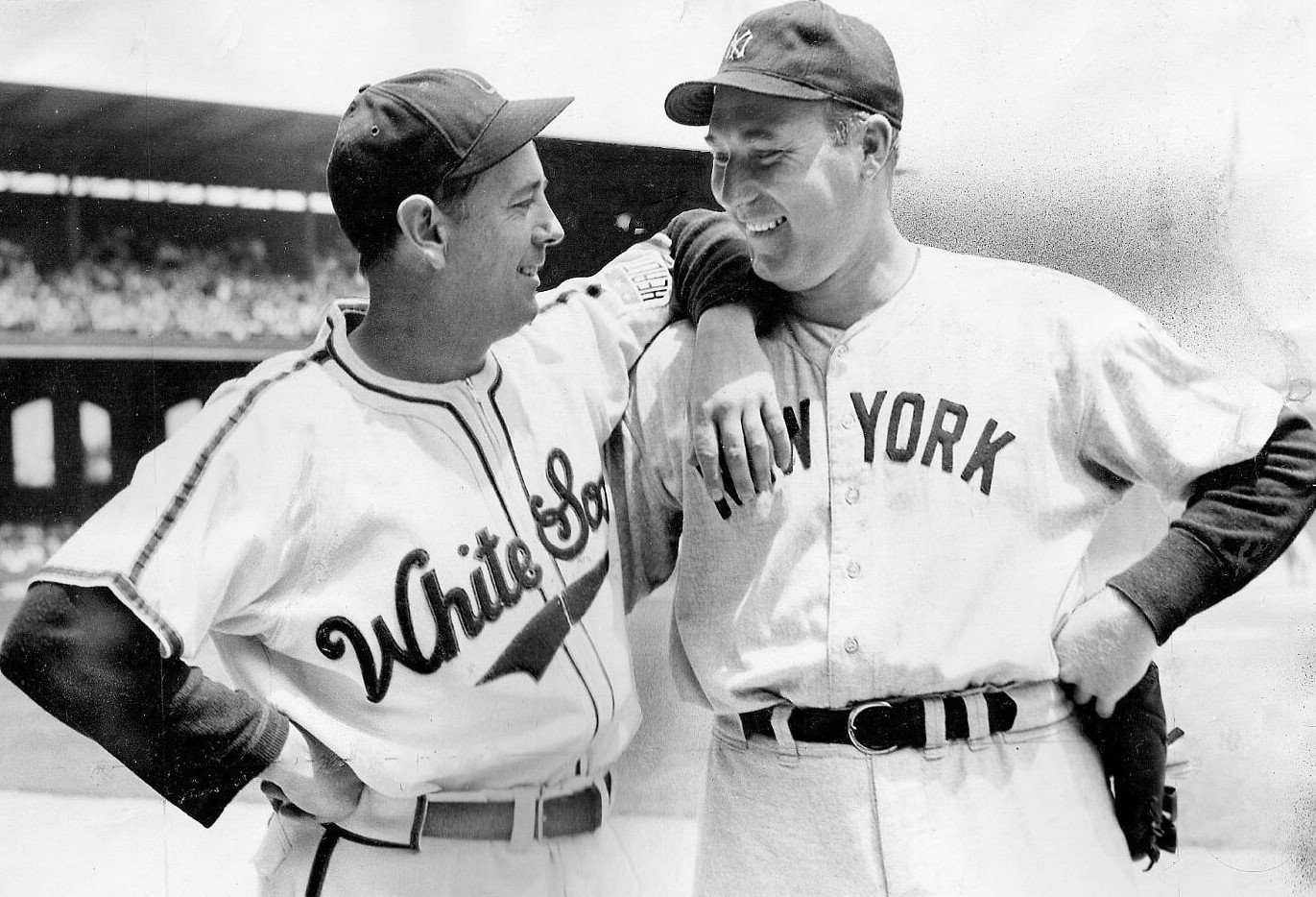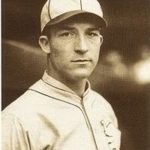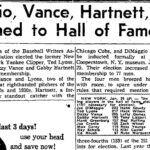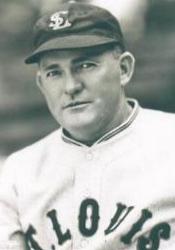Ted Lyons Stats & Facts
Ted Lyons
Position: Pitcher
Bats: Both • Throws: Right
5-11, 200lb (180cm, 90kg)
Born: December 28, 1900 in Lake Charles, LA
Died: July 25, 1986 in Sulphur, LA
Buried: Big Woods Cemetery, Edgerly, LA
High School: Vinton HS (Vinton, LA)
School: Baylor University (Waco, TX)
Debut: July 2, 1923 (5,298th in MLB history)
vs. SLB 1.0 IP, 0 H, 0 SO, 0 BB, 0 ER
Last Game: May 19, 1946
vs. WSH 9.0 IP, 9 H, 3 SO, 1 BB, 3 ER, L
Hall of Fame: Inducted as Player in 1955. (Voted by BBWAA on 217/251 ballots)
View Ted Lyons’s Page at the Baseball Hall of Fame (plaque, photos, videos).
Full Name: Theodore Amar Lyons
Nicknames: Sunday Teddy
View Player Bio from the SABR BioProject
Nine Players Who Debuted in 1923
Lou Gehrig
Heinie Manush
Bill Terry
Hack Wilson
Willie Kamm
Ted Lyons
Moe Berg
Charley Root
Earl Whitehill
The Ted Lyons Teammate Team
C: Ray Schalk
1B: Hal Trosky
2B: Eddie Collins
3B: Willie Kamm
SS: Luke Apping
LF: Bibb Falk
CF: Al Simmons
RF: Cary Reynolds
SP: Red Faber
SP: Tommy Thomas
SP: Vern Kennedy
SP: Thornton Lee
SP: Eddie Lopat
RP: Bill Dietrich
M: Jimmy Dykes
Notable Events and Chronology for Ted Lyons Career
Ted Lyons was a hard-luck pitcher who won 260 games despite pitching for the Chicago White Sox, who posted a .447 winning percentage when he didn’t get the decision. After skipping the minor leagues to go directly to the bigs, he won at least 10 games 17 times, and reached 20 victories on three occasions. Lyons began his career as a teammate of Eddie Collins, who started his career in 1906, and ended it as a teammate of Dave Philley, who retired in 1962. Lyons threw a no-hitter against the Red Sox on August 21, 1926. Lyons never pitched in a World Series, but 21 seasons of yeoman work for the seldom-contending White Sox earned his 1955 election by the BBWAA to the Hall of Fame.
He attended Baylor University with plans for a law career, but his college pitching made him a sought-after prospect. Upon graduation in 1923, he turned down an offer from the A’s to sign with Chicago for $300 a month and a $1,000 bonus. He joined the team in St. Louis on July 2 and relieved in the first ML game he ever saw, retiring the three Browns he faced.
By the next season he was a regular starter, and in 1925 he led the AL in victories (21) for a fifth-place team and fired 5 shutouts. He repeated as AL win leader in ’27 and won 22 in 1930. In 1925-30, he averaged nearly 19 wins a season, although the White Sox never finished in the first division. Late in 1925, in the nightcap of a doubleheader between the White Sox and Senators that prompted the Washington Post to write, “…the less said about the game the better,” Ted Lyons came within an out of recording a no-hit game. Chicago won the game easily, 17-0, banging out 25 hits overall, while scoring seven runs in the second inning and eight in the fifth. Lyons, the Post recorded, “had the home hitters breaking their backs in unavailing efforts to solve his delivery.” With two outs in the ninth, Washington outfielder Bobby Veach delivered a “clean liner-single to right field” to break up Lyons no-no. In a wild contest, Washington manager Bucky Harris used 21 players, including seven pinch-hitters, in an effort to stem the tide. After the game, an apologetic Veach visited Lyons in the visitors clubhouse. “I knew Ted would want to earn a no-hit game if he did it at all, so I did my best, but believe me,” Veach said, “I’m mighty sorry things turned out that way.”
On August 21, 1926 he no-hit the Red Sox, winning 6-0
Then, in 1931, he injured his arm and lost his fastball. His manager, Donie Bush, pronounced his arm “dead.” But Lyons developed a knuckleball and was soon pitching effectively again. In 1936, he helped pitch the club to its first finish in the AL first division (third) since he had joined the team 14 years earlier.
His most important weapon was excellent control. Never a strikeout pitcher, he walked only 1,121 batters in 4,161 innings pitched over his career, and at one point in 1939 he hurled 42 consecutive innings without issuing a base on balls.
In 1939, White Sox manager Jimmy Dykes started to use Lyons, who was 38 years old, only on Sunday afternoons. to save his arm and to take advantage of Lyons’s tremendous popularity to draw large crowds. This pattern was maintained through the ’42 season, with the veteran starting 21, 22, 22 and 20 games each year. The veteran right-hander posted a fine 52-30 record for that span, with a 2.96 ERA (he led the AL in ERA at the age of 41 in 1942, with a 2.10 mark). Fans took to calling him “Sunday Teddy,” and belying his age, Lyons completed 72 of his 85 starts over those years.
In the fall of ’42, the 41-year-old lifelong bachelor joined the U.S. Marines, spending part of his three-year hitch in combat. In 1946 he returned to the White Sox and pitched five more complete games, winning only one, his 260th. Thirty games into the season he replaced Dykes as White Sox manager. His managerial record through 1948 was 185-245, with the main criticism being that he was too easy-going to enforce discipline. He later coached and scouted before retiring in 1966 to help his sister JO x x manage a Louisiana rice plantation.
@ET-DC@eyJkeW5hbWljIjp0cnVlLCJjb250ZW50IjoicG9zdF90YWdzIiwic2V0dGluZ3MiOnsiYmVmb3JlIjoiTGVhcm4gTW9yZSBhYm91dCB0aGUgdGVhbXMsIHBsYXllcnMsIGJhbGwgcGFya3MgYW5kIGV2ZW50cyB0aGF0IGhhcHBlbmVkIG9uIHRoaXMgZGF0ZSBpbiBoaXN0b3J5IC0gLSAtIC0gLSAtIC0gIiwiYWZ0ZXIiOiIiLCJsaW5rX3RvX3Rlcm1fcGFnZSI6Im9uIiwic2VwYXJhdG9yIjoiIHwgIiwiY2F0ZWdvcnlfdHlwZSI6InBvc3RfdGFnIn19@
Factoids, Quotes, Milestones and Odd Facts
Played For
Chicago White Sox (1923-1946)
Managed
Chicago White Sox (1946-1948)
Similar: Burleigh Grimes, Red Faber… Frank Tanana, who also lost his fastball in the middle of his career and adjusted to become a breaking-ball pitcher with much success.
Linked: Red Faber teamed with Lyons in the White Sox rotation for eight seasons (1924-1931).
Nicknames: Sunday Teddy, The Baylor Bearcat
In 1939, White Sox manager Jimmy Dykes started to use Lyons, who was 38 years old, only on Sunday afternoons. This pattern was maintained through the ’42 season, with the veteran starting 21, 22, 22 and 20 games each year. The veteran right-hander posted a fine 52-30 record for that span, with a 2.96 ERA (he led the AL in ERA at the age of 41 in 1942, with a 2.10 mark). Fans took to calling him “Sunday Teddy,” and belying his age, Lyons completed 72 of his 85 starts over those years.
Best Season, 1925
Faber had a lot of very good seasons for bad White Sox teams. Like any pitcher, his win/loss record is not a good way to measure his effectiveness. For example, in 1932 he was 10-15 but had an ERA a run below the league average. The next year he lost 21 games with an ERA a fraction above league normal. We’ll take either 1925 or 1927 when he was among league leaders in most pitching categories. In ’25 the right-hander hurled five shutouts and won 20 games.
No-Hit Fame
8/21/1926: For CHI (A) vs. BOS (A), 6-0 at BOS. 9 innings pitched.
Description
Lyons used a “double-pump” windup which proved frustrating to some enemy batters, notably Babe Ruth.
Milestones
Had Lyons been fortunate enough to pitch for the Yankees, Tigers, or even the Senators, he would have won 300 games in his career. As it was, he accumulated 260 for a club that played at a .459 clip in his 20 full seasons. Over his long career, Lyons won at a .531 pace, while the White Sox were .447 when someone else got the decision. That makes him 19% better than his team, which is a better rate than Hall of Fame pitchers Red Faber, Carl Hubbell, Herb Pennock, Burleigh Grimes, Waite Hoyt, Red Ruffing, Warren Spahn, Sandy Koufax, Bob Gibson, and Steve Carlton.
Injuries and Explanation for Missed Playing Time
Lyons injured his arm in 1931 but returned the following spring with a knuckler which extended his career for more than a decade. Always a great control artist, Lyons was able to flutter his knuckler and other junk pitches over the plate, once going 42 innings without issuing a walk in 1939.
Transactions
Lyons signed with the White Sox due to geographical convenience. In 1923, Chicago held spring training in Seiguin, Texas, near the campus of Baylor University. One day, the Sox asked the Baylor coach to send out anyone who could pitch. Lyons showed up and impressed the Chicago brass. He was signed for $1,000 and agreed to report to the Sox after his studies were over at Baylor.
September 19, 1925
In the nightcap of a doubleheader between the White Sox and Senators that prompted the Washington Post to write, “…the less said about the game the better,” Ted Lyons came within an out of recording a no-hit game. Chicago won the game easily, 17-0, banging out 25 hits overall, while scoring seven runs in the second inning and eight in the fifth. Lyons, the Post recorded, “had the home hitters breaking their backs in unavailing efforts to solve his delivery.” With two outs in the ninth, Washington outfielder Bobby Veach delivered a “clean liner-single to right field” to break up Lyons no-no. In a wild contest, Washington manager Bucky Harris used 21 players, including seven pinch-hitters, in an effort to stem the tide. After the game, an apologetic Veach visited Lyons in the visitors clubhouse. “I knew Ted would want to earn a no-hit game if he did it at all, so I did my best, but believe me,” Veach said, “I’m mighty sorry things turned out that way.”
Replaced
In 1923, Lyons crept into the Sox rotation as the #4-5 guy, replacing Ferdie Schupp and Harry Courtney.
Replaced By
Lyons was a once-a-week hurler his last four regualr seasons, so he wasn’t really replaced in a sense. In 1943, the year after Lyons retired for the first time, Orval Grove, a tall young right-hander from Kansas, was inserted into the White Sox rotation.
Best Strength as a Player
Damage control; Lyons got opposing batters to put the ball in play. He didn’t strike out too many, in fact he walked more than he fanned in his career. He just put it over the plate and coaxed the batters into getting themselves out. Consequently, he allowed his share of hits, but he managed to pitch effectively with all those runners on base (12.1 per nine innings).
Largest Weakness as a Player
Timing — what else can you say about a very, very good pitcher who played for more than 20 years on rotten teams and never got the chance to pitch in any meaningful games? The closest the Sox finished to first place in Lyons’ 21 seasons with the team was 9 1/2 games. That came in 1926, when they limped in at fifth place. And even that’s deceiving, since on the morning of September 1, 1926, the White Sox stood 16 1/2 games back. In fact, in Lyons’ entire career, the closest the Sox were to first place on the morning of September 1 of any season, was 10 1/2 games in 1940. That September, Lyons made his typical once-a-week appearance on Sundays, winning two and losing two. When he defeated the Red Sox, 5-1 on September 15 in the first game of a doubleheader, it helped the team inch within four games of first place with two weeks to go in the season. That was the closest Lyons had ever been to first place that late in the season. It was the closest he got, as the White Sox lost seven of their next nine games.

